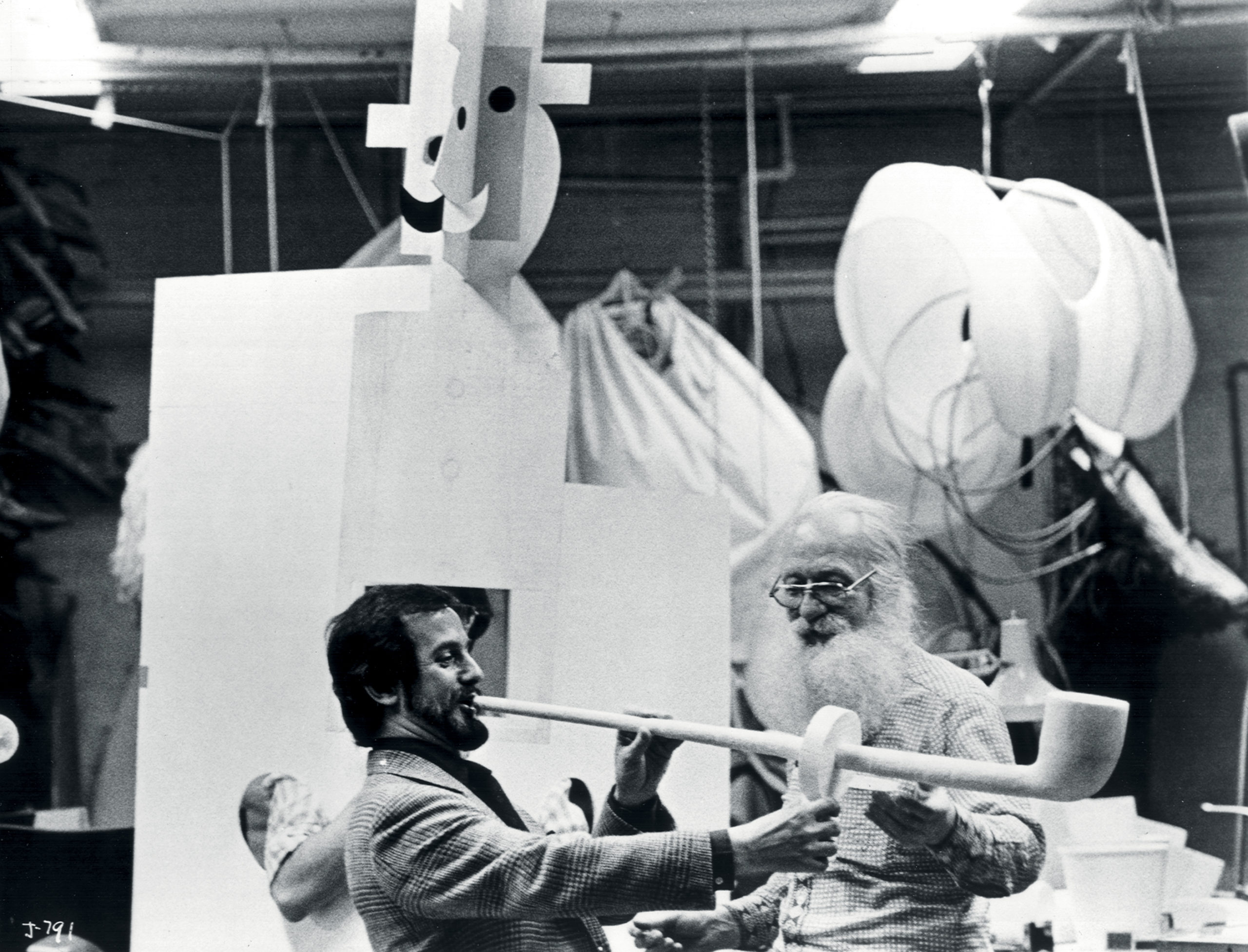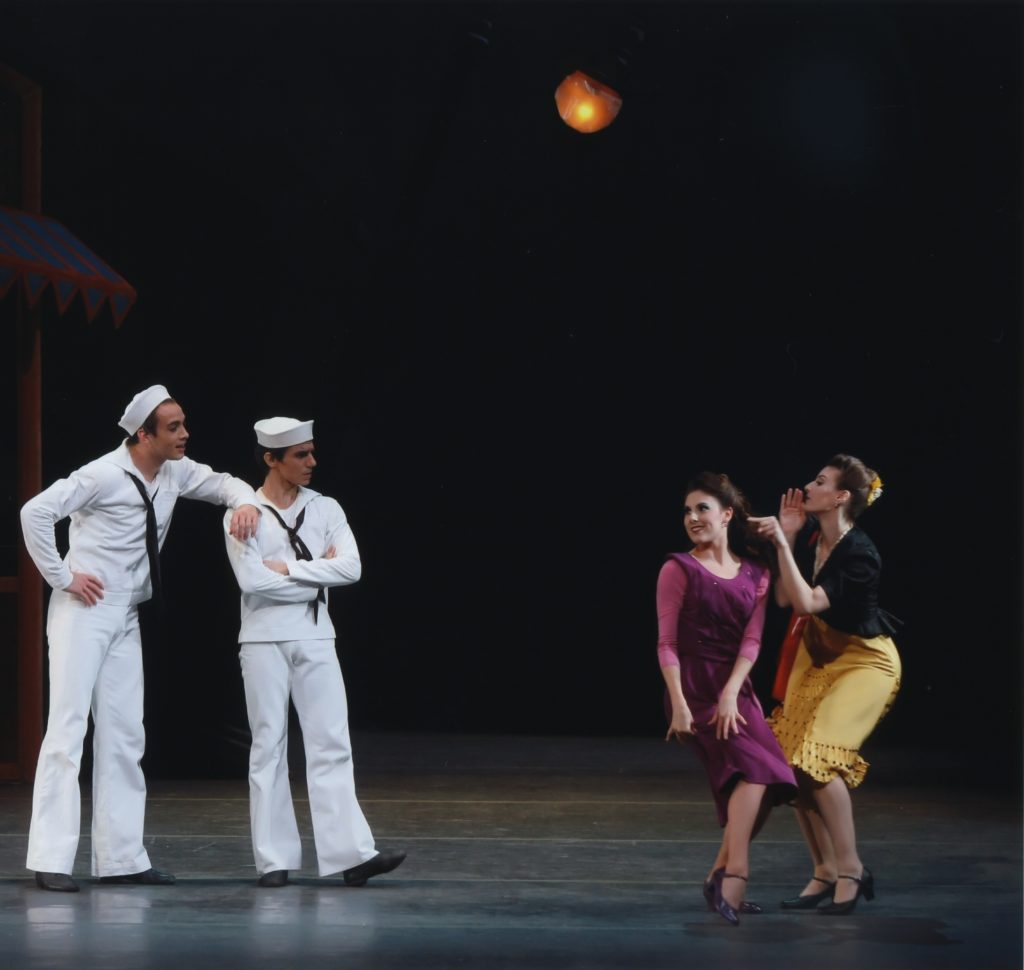
At first glance, Kermit Love (1916–2008), with his long, Santa Claus–like beard and gentle demeanor would seem the antithesis of fashion. But the man who died at age 91 was one of the theater world’s most original costume designers. With a career spanning more than six decades, Love worked with many of the 20th century’s greatest choreographers, including Agnes de Mille, Jerome Robbins, George Balanchine, Twyla Tharp and Robert Joffrey. Love also created several famous “Sesame Street” Muppets that won him international attention. From superbly conceived backless tuxedos to giant angel wings to mice sporting suits of armor to an 8-foot-2-inch yellow-feathered ornithological creature, Love’s constructions sprang from the mind of a uniquely gifted artist who could bring characters to life through detail. His work forever changed the ideology behind effective stage costumes and designs.
“Kermit was enormously valuable in providing a consciousness-raising toward the value of wit and fun in creating costuming for the stage,” says veteran dance photographer Herbert Migdoll, who knew Love from the designer’s work with Joffrey Ballet, including the 16-foot-tall Mother Ginger puppet he created for the company’s Nutcracker (1987). “The guy was a genius.”
He was born Kermit Ernest Hollingshead Love in Spring Lake, New Jersey. As a youngster, he first became enamored with Punch-and-Judy puppets. Then, after being thrown from a horse at age 12 and confined to bed for three years due to leg injuries, Love began listening to radio dramas and drawing pictures of how he imagined the characters. The theatrical die was cast.
In 1935, 19-year-old Love made puppets under the auspices of a federal Works Progress Administration theater before designing costumes for Orson Welles’ Mercury Theatre. But it was his work with Barbara Karinska, star costumer for the New York City Ballet, that led the designer to the dance world. Love worked with Karinska in 1942 on de Mille’s Rodeo (which he redesigned in 1976 for the Joffrey), then, two years later, he designed the jaunty sailor suits for Robbins’ first ballet, Fancy Free.
However, it was Love’s 40-year collaboration with Balanchine that yielded a wealth of designs: the 28-foot-high marionette for Don Quixote (1965); Karin von Aroldingen’s Firebird wings in 1972; the masks for Pulcinella (choreographed with Robbins from 1972); and the full-body puppets for the 1975 one-act opera, L’Enfant et les Sortilèges (The Spellbound Child). (He also created dancing chairs, a spinning clock, life-size owls, frogs and dragonflies for the 1981 PBS “Dance in America” television production of this opera.) “Balanchine liked working with me because . . . I surprised him,” Love told Dance Magazine in 1998.

This innovative spirit was also evident in Love’s fruitful alliance with Twyla Tharp, whom he met in New York City while working as a designer-consultant at Judson Dance Theater in the 1960s. He designed garb for a number of Tharp’s works, including The Fugue (1970), Eight Jelly Rolls (1971) and The Bix Pieces (1971). Love, in conjunction with Tharp’s then manager, William Peter Kosmas, also advocated for a revolutionized company image—specifically, updated costumes and new haircuts at Vidal Sassoon’s salon. Tharp soon emerged with her signature angled bob.
Original Tharp dancer Sara Rudner, who retired as director of dance at Sarah Lawrence College in 2019, recalls Love’s ability to unify a piece yet work with the dancers individually. “He took these dances and put them in time and character and helped us become more—for lack of a better word—stylish,” she says. “We were dancing with the same wild energy, but we were in these exquisitely conceived, tailored costumes. He was extremely thoughtful and perceptive about what would help the dance be visible.”
While working at the Judson Theater, Love also met the future famed Muppeteer, Jim Henson. This introduction led to the creation of “Sesame Street’s” Big Bird, which debuted in 1969, and his 7-foot-tall wooly friend, Mr. Snuffleupagus. Love, who was occasionally known to be cantankerous, aptly designed two other regular “Sesame Street” residents, Oscar the Grouch and Cookie Monster, and created 22 versions of characters for foreign productions. But despite the common name, Love insisted that he was not the namesake of Henson’s famous frog. The late costumer also served as key Muppet supervisor for the iconic children’s show, and often appeared as Willy the Hot Dog Man—a character who always sported a yellow feather in his hat, as a tribute from Love to his treasured bird.
And it’s not every designer who gets the approval of artist Pablo Picasso. As part of the Joffrey’s 1971 remounting of Léonide Massine’s 1917 work, Parade, for which Picasso designed the original costumes for Sergei Diaghilev’s Ballets Russes, Love was asked to reconstruct the cubistic creations. These characters included the Manager on Horseback, manned by two dancers, as well as two large constructions, the French Manager and the American Manager.
Migdoll says that Picasso’s original costumes (made out of papier-mâché and wood) were too heavy for the dancers to move in, so Love refashioned them with aluminum tubing and Styrofoam, enabling the men to move and jump around with ease. “Picasso signed off on the ballet,” adds Migdoll, “and Massine was impressed that the work was going to have a brighter life than it did in its first incarnation. Kermit’s work made it very fresh and it was extremely successful for the Joffrey.”
Love remained active in the business as he approached his 90s, but he died on June 21, 2008 of congestive heart failure in Poughkeepsie, New York, close to where he lived with his partner of 50 years Christopher Lyall. “Kermit had a gift to go in many different directions,” says Rudner. “He never seemed to be bound by his own previous work. That is the characteristic of a really interesting, wonderful artist.”
Check out these resources for your students:
Articles:
“Influential designer had hand in ‘Sesame,’” by Jocelyn Y. Stewart, Los Angeles Times, June 2008
“Kermit Love,” by Veronica Horwell, The Guardian, June 2008
“Kermit Love,” by Todd Stockman, Puppeteers of America, Volume 37, Issue 3, 1986
“Kermit Love, Costume Creator, Dies at 91,” by Dennis Hevesi, The New York Times, June 2008
Books:
Street Gang: The Complete History of Sesame Street, by Michael Davis ,Viking, 2008
The Wisdom of Big Bird (and the Dark Genius of Oscar the Grouch): Lessons from a Life in Feathers, by Caroll Spinney, Villard, 2003




